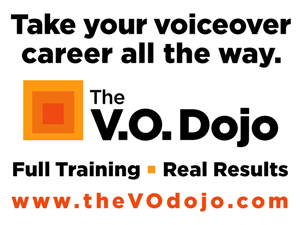|
VOICE OVER RATES Another Way To Figure Broadcast And New Media Voice Over Rates: Consider The Context June 22, 2015  By J. Michael Collins By J. Michael CollinsVoice Actor & Coach There is a lot of money in political campaigns. At the national level, this can amount to many hundreds of millions of dollars for a single candidate. Some is well spent, while much is wasted in pursuit of vainglorious ambitions that exceed public buy-in. Embedded within the political process, however, are a low-profile group of individuals whose presence on a campaign can often make or break the candidate's chance for success. These people often have vague titles like "media adviser," "consultant," or "strategist." Ultimately, they are a highly-skilled group of fixers who can make the most mundane aspirant look electric, and the most scandal-ridden seem virtuous. These operatives who add tremendous value to a political campaign have one thing in common: While they may draw a fixed salary over the length of the race, they make their real money based directly on the added value they provide, as measured by the media buy of the campaign. The better job they do, the more contributions a candidate receives, and the more money the campaign has to spend on advertising - a small but significant percentage of which goes into their pocket. AND FOR VOICE OVER RATES ... There has been fiery debate recently about broadcast and new media rate structures in the voice over business. A perception exists that rates are being pushed lower by talent influx and changing technology. Discussions both civil and acrimonious have generally boiled down to a broad consensus that buyouts are bad, and residual pricing based on usage is good.
NATIONAL BROADCAST RATES Consider this: The cost of a 13-week national broadcast run for a major brand commercial can run into the millions of dollars. With TV, maybe some cut downs for radio, and Internet pre-roll/social media ads, let's say a major McBurger joint might spend $2M on the ad buy alone. Union scale for such an ad might amount to around $4K for the various media for a single cycle. This represents one fifth of one percent of the total ad buy into the pocket of the single individual chosen by the company to give voice to their message. Does that seem fair? LAUGHABLE - OR FAIR? During a recent coaching session with a talent I am mentoring, we had a browse through job postings on a particular online casting platform. We encountered a TV ad for a nursing organization to run for one month in a single market of maybe 50,000 people in upstate New York. Pay? $150. Now, both of us initially reacted the same way: $150 for TV? That's laughable! Then a little light bulb went on. What might this particular group be spending to air this project? Maybe.....maybe.....$2,500? That might be a high estimate considering the market, but let's go with it. TV only, 4-week buy, small local market, $2,500. So, at $150 all-in, the talent receives 6% of the media buy. If the talent working for the McBurger company were to receive the same, their pay for the gig would be $120,000 for a single cycle. Which one seems more fair now? NEW WAY TO FIGURE It is entirely possible that the debate over rates, online casting, union versus non-union, etc., has completely missed the point. While blanket buyouts are clearly exploitative, especially for large brands, the cycle and usage structures the industry has long relied upon are only a degree less abusive. We are still signing away tremendous added value for a pittance of what we actually contribute to the success of the campaign. Perhaps there is a third way. Broadcast and new media jobs should be considered in context, not based on holy-writ numbers negotiated in back rooms or dreamed up by entrepreneurs, the majority of which tend to be exceedingly favorable to the buyer. WORKS FOR NEW MEDIA This third way paradigm applies particularly well to new media like Internet pre-roll, YouTube ads, and social media advertising. Tracking usage and impressions is cumbersome if it is possible at all. Tracking the media buy is much more accessible, and a far better barometer of the value we are adding. A medium to large social media ad campaign might cost $50,000 for instance. While the 6% figure presented in the small market spot example is probably a bit ambitious, one could argue that a minimum session fee plus 3% of the total ad buy would be a fair rate for any broadcast or new media run. For our social media campaign, that might mean $250 + $1,500 for usage. For McBurger, a flat $60,000 - and for our nurses in Utica? That $150 suddenly looks a bit more reasonable. These days, it's not often that we look to politics for good ideas. The great rate debate will not abate any more than poor alliteration. Nevertheless, perhaps this third way offers promise to bring order to the chaos. ------------------------------ ABOUT J. MICHAEL With almost 20 years as a professional voice over artist, J. Michael Collins has worked with many major world companies, brands, sports leagues, and organizations. In addition to his work in the classic, agency-based world of voice over, he has established himself as a leading P2P (pay-to-play, online casting) authority. He is a top-grossing talent in the online marketplace, and also a voice talent coach and demo producer Email: jmichael@jmcvoiceover.com Web: www.jmcvoiceover.com |
As of the NEW website launch, 03/22/2012










For many, I presume this way of thinking will be difficult, but may well be one of the important signposts; in finding our way to new better rates for all.
The time for arguing should be over and instead, focusing on solutions; or we ALL continue to lose.
Here we are as non-union worker-bees made to feel like we are somehow bottom-feeding ...when in reality, who is making better dough? Unless one is comparing a super-sweet, long-running, long-term-residual-paying SAG-AFTRA gig, individually with a quickie 150 dollar local cable TV spot, not a bad pay-day.
Yes, I get that with the union there are added benefits as well, and I am not knocking it by any means. However, there is the exclusivity factor which forces the talent to turn down other gigs of the same genre.
For the most part, for a pro-level voice talent, however you slice it, it's still a tomato. The gourmet-factor is all in the presentation. Thanks, JMC!